Reliquaries are pieces of Catholic goldsmithing that serve as containers for relics. That is, the existence of reliquaries in the Catholic Church is deeply tied to relics.
A relic is an item left behind by those who have been sanctified. In other words, they are objects closely associated with a saint, with Christ, etc.
For example, one of the most well-known relics in the world is the Shroud of Turin, a piece of cloth also known as the Holy Shroud, which wrapped the body of Christ. This burial cloth bears the image and wounds of Christ after the Crucifixion.
There are also many relics (fragments) associated with the Cross on which Christ suffered greatly on Mount Golgotha.
The origin of relics dates back to the early years of Christianity, during the time when Christians were persecuted by Roman authorities. In those years, the belongings and memories of martyrs who gave their lives for the Christian faith began to be valued.
Relics are objects of immeasurable value and cannot be replaced. They are unique items with profound meaning for Catholics.
In Catholic tradition, relics are classified into three degrees:
Keeping these relics in reliquaries serves multiple purposes: to preserve them physically, to facilitate veneration by the faithful, and to keep alive the memory and example of the saints.
The Church has developed strict procedures to verify the authenticity of relics, ensuring that reliquaries contain true Catholic relics.
The Christian veneration of relics has centuries of history. Relics are reminders of men and women who gave their lives to God and served as examples to humanity. Items related to Jesus, the Virgin Mary, the Apostles, or the martyrs were objects of great devotion from the early Church.
Church Fathers like St. Jerome and St. Augustine were among the first to speak about relics and their correct use to avoid fraud. These early theologians clarified that relics themselves are not worshiped, but rather God is honored through them.
Various councils helped define the veneration of relics within the Catholic Church. The Second Council of Nicaea (787) condemned those who scorned sacred objects, including relics.
The Fourth Lateran Council (1215) prohibited their sale or display without papal permission and called for vigilance to avoid deceitful practices for profit.
The Council of Trent (1563) offered guidance on the legitimate veneration of saints, relics, and images, affirming that saints intercede and only Christ saves. It rejected those who denied the veneration of relics and called for the elimination of superstition and abuse, setting norms for their approval and use. In 1593, Pope Clement VIII established a congregation to regulate indulgences and relics, which remained active until 1917.
The Second Vatican Council reaffirmed the tradition of venerating saints and authentic images (Sacrosanctum Concilium 111). The Code of Canon Law (1983) prohibits the sale of sacred relics and regulates their transfer and veneration.
The Catechism (1993) recognizes the veneration of relics as part of popular piety tied to the liturgy, calling for pastoral discernment to avoid abuses.
The Directory on Popular Piety (2002) defines relics as bodily remains or objects linked to saints and recommends ensuring their authenticity, avoiding excessive fragmentation, and preventing collection and fraud. It states that relics placed under the altar symbolize communion with Christ and should be treated with dignity, never placed directly on the altar table.
Reliquaries are cases, boxes, chests, and caskets primarily used to protect relics.
Their main purpose is the preservation and safeguarding of the relics inside them.
In the early Church, as relics gained importance, containers began to appear to protect them. Initially, they were rudimentary boxes, cases, or chests meant only to protect and transport the relic. They were often worn as pendants or necklaces.
After centuries of persecution, with Christianity accepted as the Roman Empire's religion, the situation of relics and related Catholic items changed dramatically.
In that context, the role of reliquaries shifted—from containers for transport to objects used to protect and display relics to the faithful.
In the Middle Ages, reliquaries evolved from opaque boxes to chests with glass parts that allowed the faithful to see the relic. Their design also changed—from traditional square structures to more slender, Gothic-inspired forms.
Today, reliquaries are important pieces in churches that house relics. It's common to find antique silver reliquaries that have preserved relics for centuries.
Spain has a strong tradition of essential reliquaries, such as the reliquary of Saint Teresa of Ávila.
Over the centuries, various types of reliquaries have been developed depending on their function and use. Among the most common are:
Today, a wide variety of reliquaries are available for purchase, from silver reliquaries to wooden ones. Prices vary greatly depending on size and material. The most affordable ones are made of metal and can be purchased in our online store.
Catholic reliquaries | Online sale of liturgical reliquaries, boxes, and cases to store Catholic relics | Silver, gold, bronze, or metal reliquaries in various styles: Gothic, classical, Baroque, etc. If you want to buy a reliquary online for a Catholic relic, you will find what you need in our store.
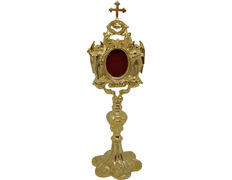
Ref: 94F30761
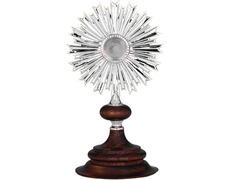
Ref: 25FBA701
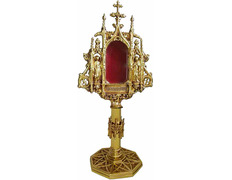
Ref: 0F1501
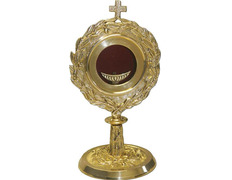
Ref: 94F10566
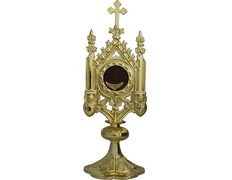
Ref: 94F10537
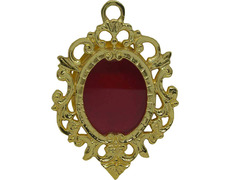
Ref: 94T10277
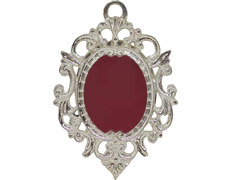
Ref: 94T10277
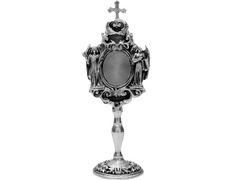
Ref: 1F1974
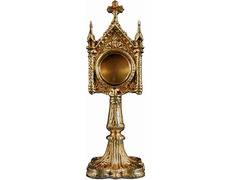
Ref: 0F1551RGP
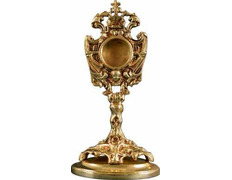
Ref: 0F1550RB
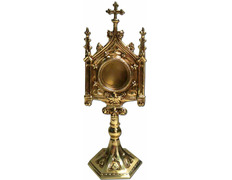
Ref: 0F1551RG